09 Aug How To Talk About Your Brand
Last year, a buzzword ripped through the content marketing space that most marketers were surprisingly thrilled about and eager to implement. Shockingly, it didn’t start with “virtual” or end with “digital”. Instead, it was what attracted most marketers to the industry in the first place, “storytelling”.
In the article “How To Tell A Compelling Brand Story” by Clifford Chi he said that content marketing’s steady adoption of storytelling is an exciting new opportunity for content creators. However, since we’ve spent the majority of our careers optimizing content for algorithms, it can be challenging to flex a creative muscle that’s slowly withered away from inactivity and, in turn, move people emotionally and sear your brand into their memories.
A brand story recounts the series of events that sparked your company’s inception and expresses how that narrative still drives your mission today. Just like your favorite books and movies’ characters, if you can craft a compelling brand story, your audience will remember who you are, develop empathy for you, and, ultimately, care about you.
So, how do you write a brand story? First, highlight your story’s conflict.Check out the following story. Does it resonate with you?
A girl wearing a red-hooded cloak is strolling through the woods to give her sick grandma some much-needed food and TLC. She passes by a wolf on the way. They exchange a slightly awkward soft smile-nod combination that random colleagues usually greet each other with as they pass in the hallway. She makes it to her grandma’s house without a scratch. They eat lunch and play a game of Clue together. Grandma wins by deducing that Colonel Mustard killed Mr. Boddy in the Billiard Room with the candlestick, what a shocker! The End.
So … what’d you think? Did this story keep you on the edge of your seat? Or does it feel … off? For some reason, it doesn’t work, right? That’s because there’s no conflict. Despite the intense game of Clue at the end, there’s nothing at stake. There’s no tension. The wolf didn’t try to eat the girl. He didn’t even go to Grandma’s house. He barely acknowledged Little Red Riding Hood.
At their core, stories are about overcoming adversity. So if there’s no conflict presented, there’s no drama or emotional journey that people can relate to. And if your story has no drama or emotional journey, it won’t hold anyone’s attention, let alone resonate with and inspire them.
Unfortunately, in the business world, brands are horrified to reveal any adversity or conflict they’ve faced. They believe that spinning a rosy, blemish-free story about how their company only experiences hockey stick growth will convince people that they’re the industry’s best-in-class solution. Any adversity or conflict during their company’s history will expose their imperfections, deterring potential customers from buying their product.
But, in reality, this is a huge misconception. Nothing’s perfect. Everything, including companies (especiallycompanies), has flaws. Plus, people don’t relate to perfection. They relate to the emotional journey of experiencing adversity, struggling through it, and, ultimately, overcoming it. Because, in a nutshell, that’s the story of life.
Conflict is key to telling compelling stories. So be transparent about the adversity your company has faced, and own it.
Also, don’t forget about your story’s status quo and resolution.
Conflict isn’t the only thing you should focus on when crafting your brand story. A compelling story has two other fundamental elements, the status quo and resolution.
The status quo is the way things are or the initial nature of your situation. The conflict disrupts this situation and puts something at stake, forcing the protagonist (your brand) to actively find a solution to this problem. The resolution describes how the protagonist solves the problem, giving your audience an emotional payoff.
In sum, your brand’s story structure should look like this, status quo, conflict, and resolution. It’s as simple as that.



